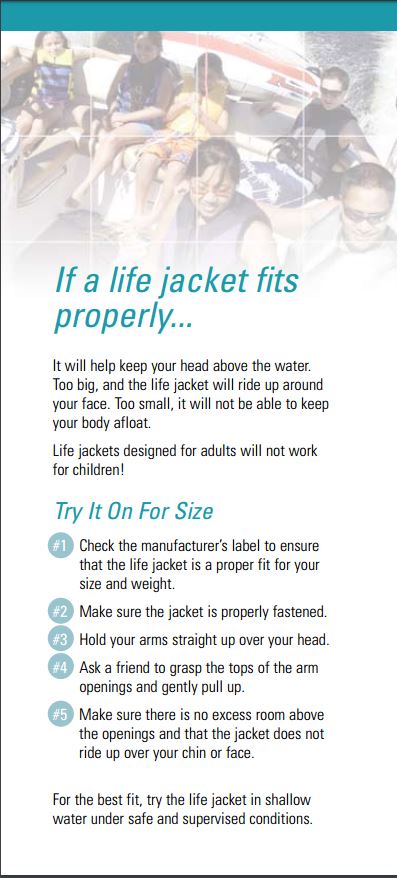How To Make Sure Your Personal Flotation Device Fits Properly

Did you know…
- That half of all recreational boating fatalities happen in calm water?*
- That these fatalities often happen close to shore?*
- That in most cases, there were PFDs stored on board the boat, but they weren’t being utilized?*
- That the number of U.S. boating accidents had steadily fallen from 1997 to 2012, but they have been on the rise since then?**
This is why The U.S. Coast Guard’ Boating Safety Division recommends that all boaters wear PFDs (personal flotation devices) while they are out on the water. Simply having them on the boat isn’t always enough to save a life.
Just wearing a PFD isn’t enough, though. It’s very important to select the right type of PFD, and to make sure that it fits properly. A PFD that doesn’t may slip off, be incapable of keeping the wearer afloat, cause an unconscious person to flip over, or in some cases, cause loss of blood flow or strangulation.
So how do you make sure your life jacket fits? Follow these guidelines, courtesy of The U.S. Coast Guard:

Whether swimming, fishing, participating in water sports, or just having a family cruise, we want everyone to have a great time out on the water. As always, happy and safe boating from Atlantic Yacht Basin!
Sources:
*https://www.uscgboating.org/images/howtochoosetherightlifejacket_brochure.pdf


